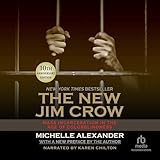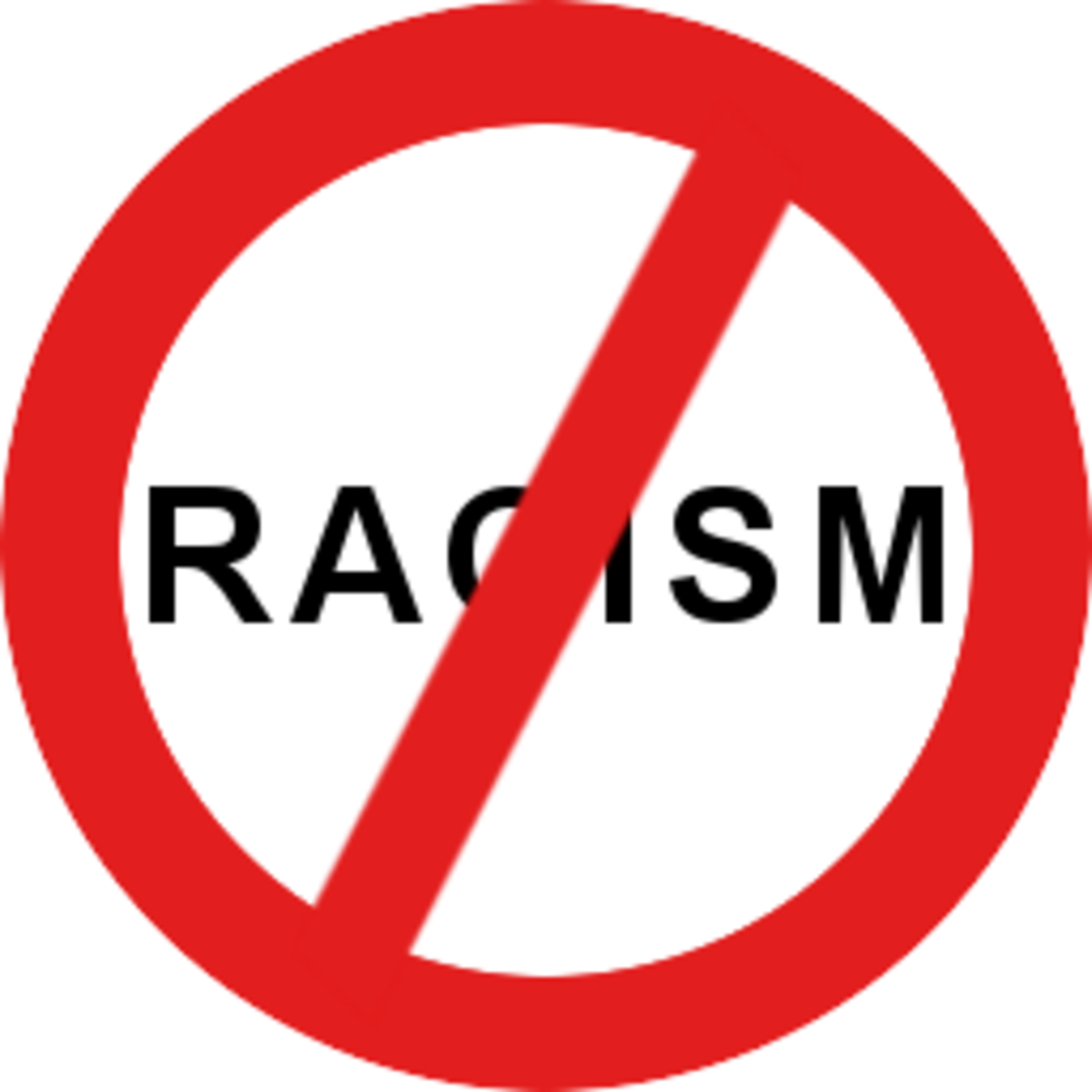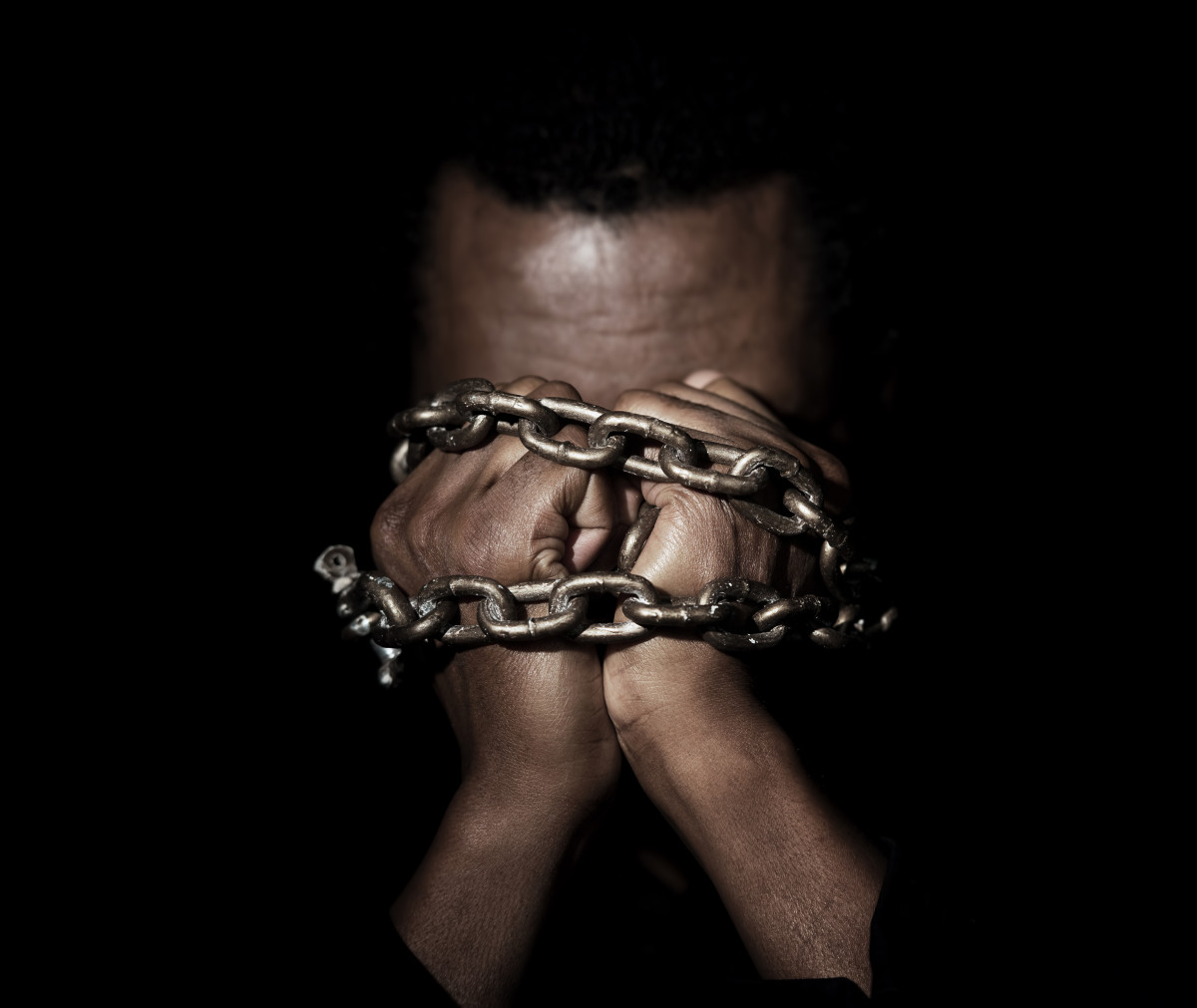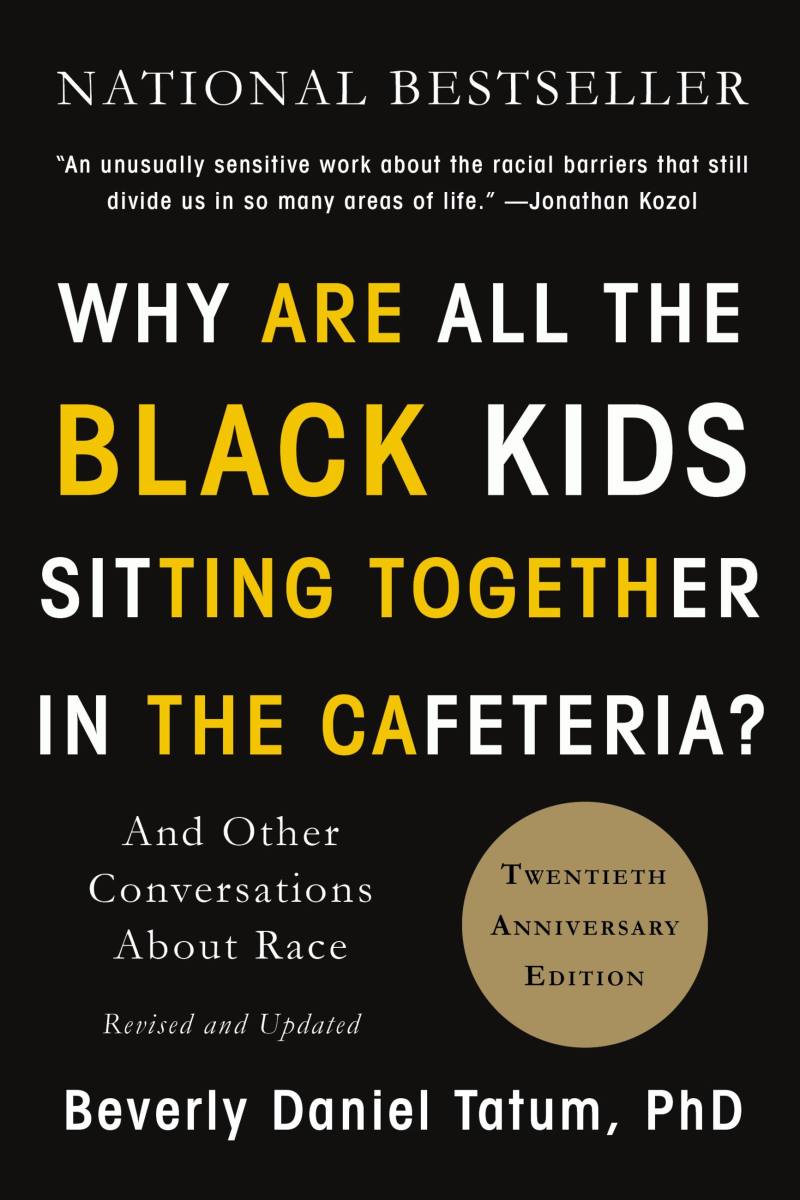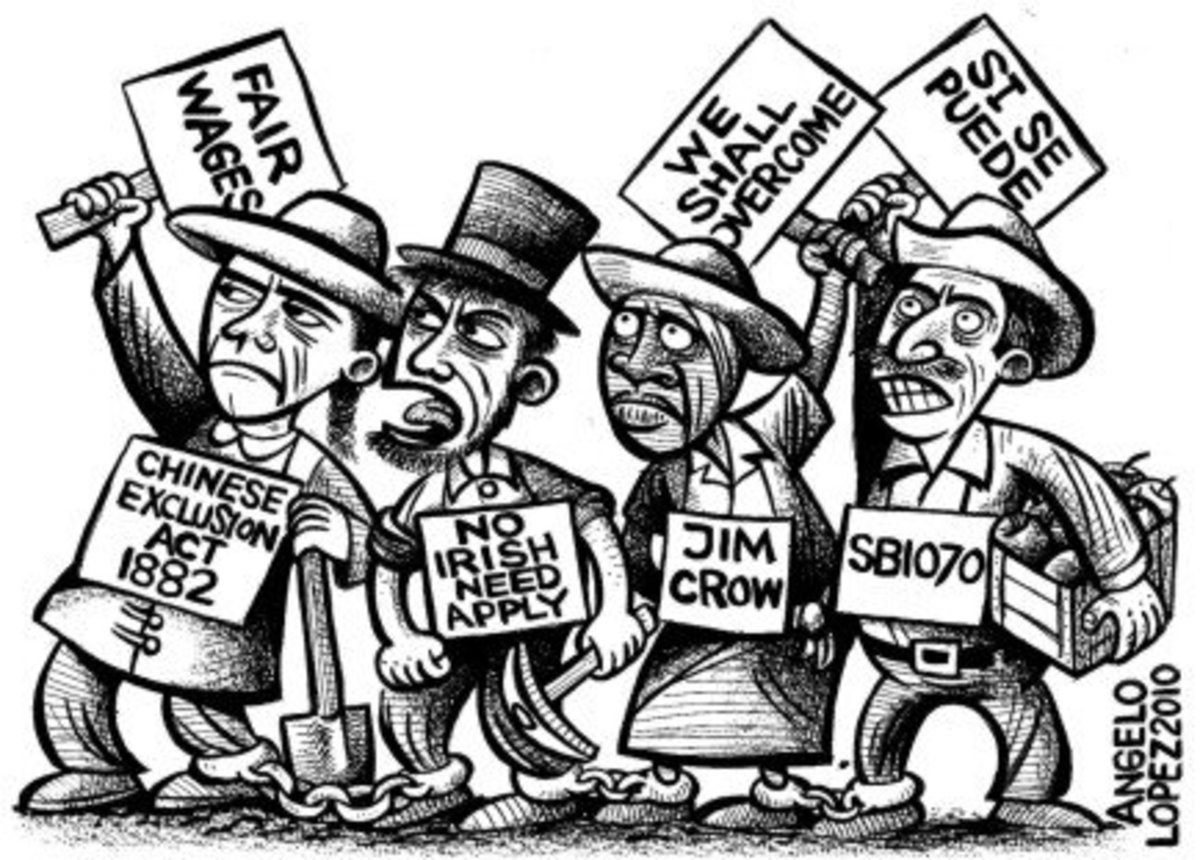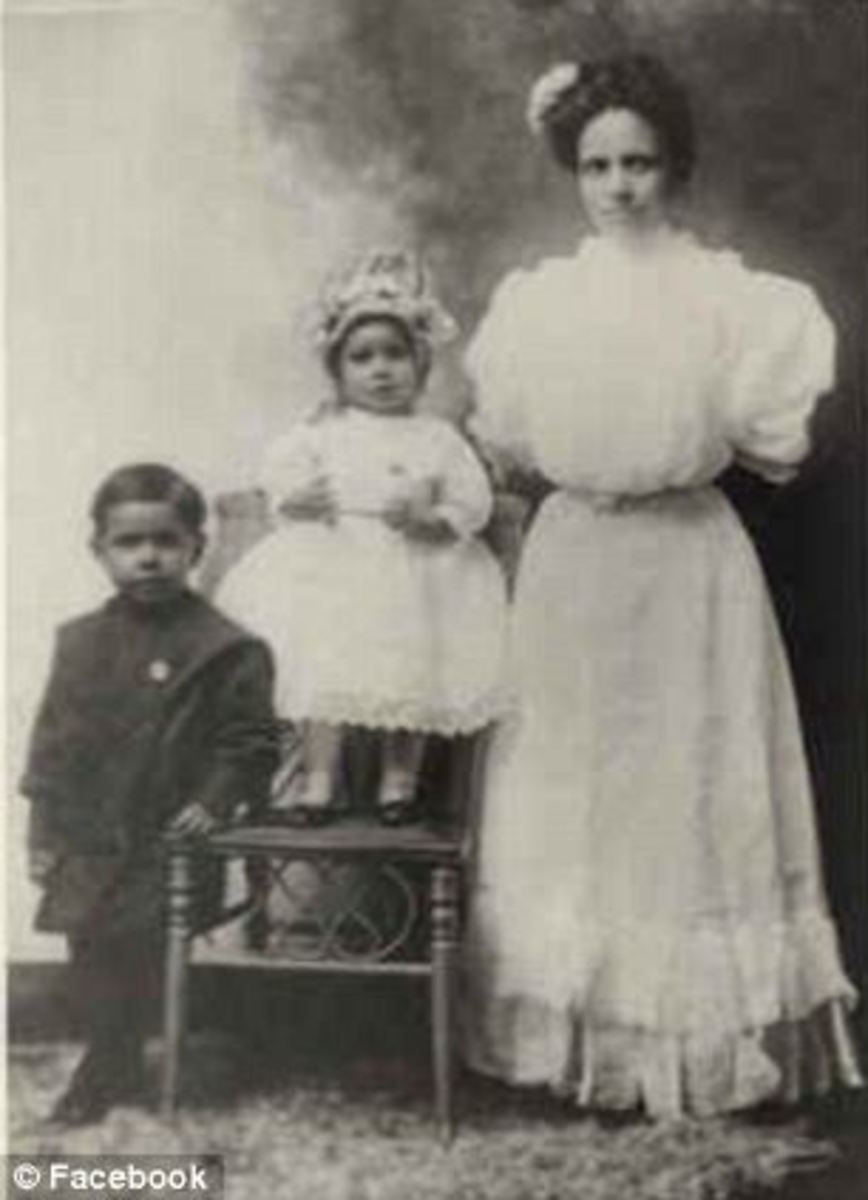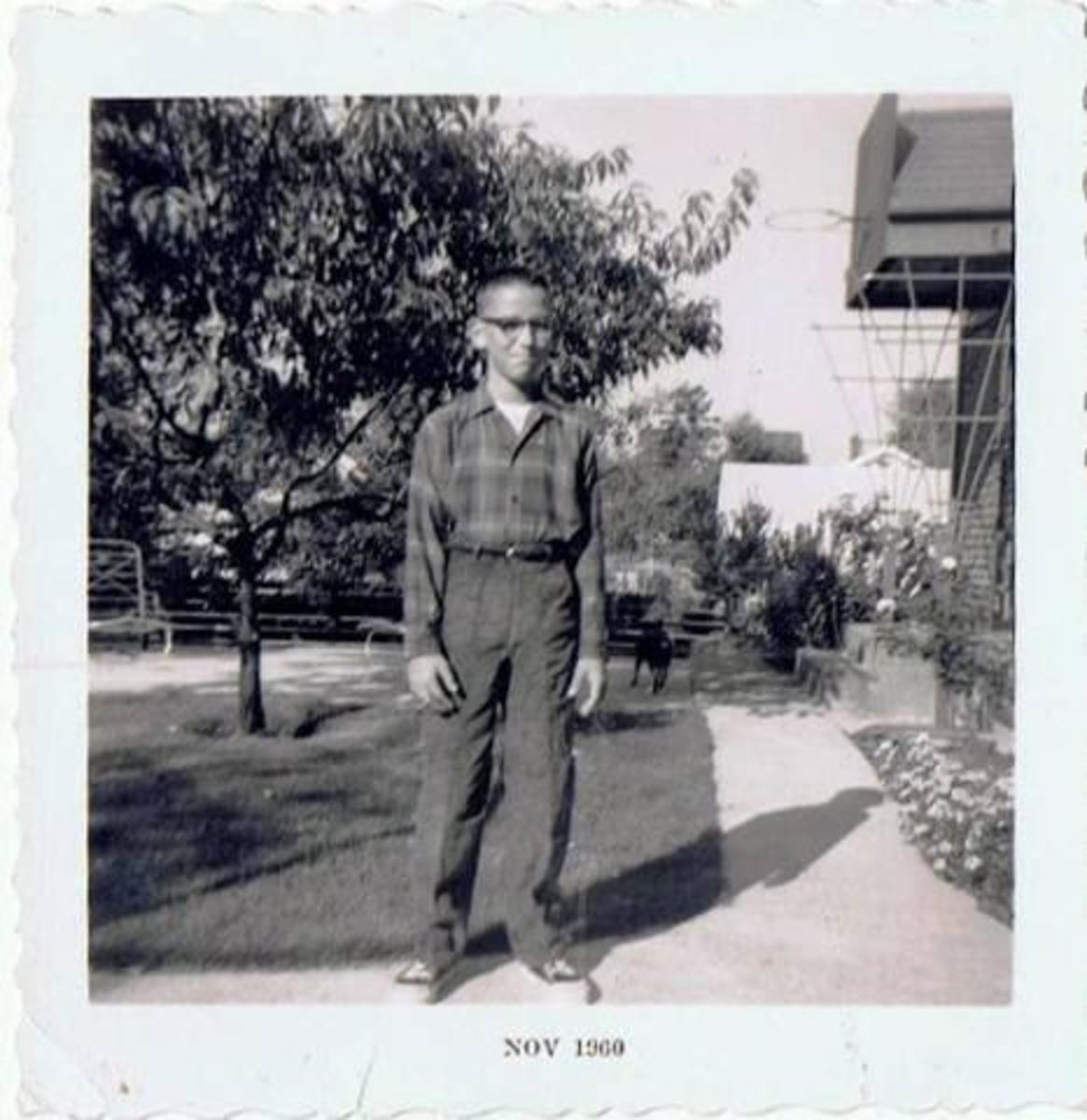Why Are So Many Americans Racist?
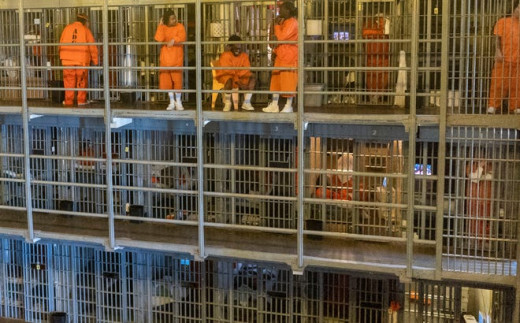
What is it Like to be White in America?
Being white in North America means many things. It means not having to know the history of this country, and not being bothered to pay attention when that history repeats itself. It means making excuses to explain the racist behavior of friends and family, but never having a reason to leave the comforts of your white social circle. It means never having to face the fact that your white racial insulation echoes a larger social environment that serves to protects you at the expense of people of color. A constant, relentlessly reinforced feeling of racial superiority produced by a society that is fundamentally based upon racial discrimination and prejudice. The first step in dismantling a system that disproportionately targets people of color is to acknowledge that the white experience and the Black experience in this country are not the same.
The history of racism in North America starts at the very beginning – but what is most important for white people to know is that our society has produced new and similar iterations of the same racial oppression again and again since the abolition of slavery in 1865. As desperate attempts to discover a scientific or biological justification for this unequal treatment proved unfruitful, it became imperative for white people to maintain their place in power atop the social hierarchy. When President Nixon declared the War on Drugs in 1971, he effectively launched a modern form of social control aimed at the Black community in the form of mass incarceration (Alexander 2010).
White people are familiar with overt and easily-recognizable white supremacy. We associate anti-Black racism with the KKK, neo-Nazis, swastikas, the N-word, and hate crimes. If that is how we define a racist, then most people are not guilty and will in fact be offended at the very suggestion of racist behavior. It is for this reason that white people should understand how racism is a socially-constructed system designed to benefit the white majority, and that none of us are immune to its effects. Acknowledging that we are complicit to racism means acknowledging that we have “investments in a system of racism because it’s served [us] really well. And we also have an investment in not seeing any of that, for what it would suggest about our identity and what it would require of us in action” (DiAngelo 2018). We must stop shrugging off the blame to some imagined archetypal racist, and start taking responsibility for being complicit to racism.
The White Equilibrium
The white majority occupies a social environment that insulates and protects from any uncomfortable feelings about race. Surrounded by others who confirm our views, we feel no need to discuss the race issue any further. We clutch our pearls at the mere suggestion that we have a racial bias, and expend such immense effort to prove how un-racist we are (“But I have black friends”, “But I love my mixed-grandchildren”), that we almost always miss the point entirely. Occupying the top spot in this constructed social hierarchy, white people are not only comfortable with being complicit in the system of oppression, they are entitled to this feeling of racial comfort. White fragility results when this lack of “racial stamina” in discussing social issues, combines with the inability to self-reflect on what it means to be white (DiAngelo 2019). When confronted with the possibility of colluding with a racist system, white people experience the unfamiliar and uncomfortable feeling of being forced to think about their race. To restore the white racial equilibrium, there is a tendency to react with anger, rage, denial, silence, or shutting down completely.
Robin DiAngelo, PhD, author of White Fragility: Why It’s So Hard for White People To Talk About Racism, illustrates a few of the common “triggers” that can interrupt the white racial equilibrium. When we hear people of color speaking directly about their own experiences with racism, this challenges the white taboo on talking openly about race – race is something we “just don’t talk about,” because we are often able to ignore race issues while suffering no direct loss ourselves. When people of color disagree with our opinions on race issues, we experience an attack on our white entitlement to the racial comfort described above. The structure of this system makes us feel entitled to validation in our opinions about race, because once we have confirmed that we are, indeed, not racist, white equilibrium is restored. When we receive feedback that our behavior may have been racist, this challenges our white racial innocence. It is the intentionality of racism that is unsettling for white people, and as long as “we don’t mean to separate, as long as it ‘just happens’ that we live segregated lives, we can maintain a (fragile) identity of racial innocence” (DiAngelo 2019). When white people complain of rowdy and disruptive protests against police brutality by saying, “Why can’t they protest peacefully?” What they really mean is that protestors should behave in a way that allows white people to stay comfortable with being white, and conveys the underlying expectation that people of color are obligated to serve white people in some way.
The truth is that it is impossible to shake off decades of systemic oppression and racial violence with a few simple strokes of a pen. These ideas are deeply embedded in every social institution – there are remarkable disparities within the criminal justice system, unemployment, housing, healthcare, political power, and education, to name a few. To think that one is unaffected by any racial bias, meanwhile swimming in racist water, is both ignorant and unproductive. Understanding that your whiteness has afforded you certain unspoken privileges, almost always at the expense of the Black community, allows us to look ahead toward a solution rather than trying to find the individual/s to blame. Colorblind racism (that is, the refusal to acknowledge the Black experience) that is so pervasive in the ideology of white progressives, is the single greatest threat to real change in this country.
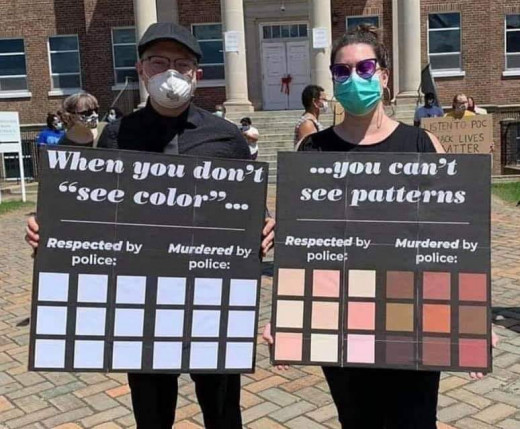
Capitalism's Role
As pervasive as the myth of the archetypal racist, is the eagerness of the white liberal to pinpoint racism as the problem in order to make anti-racism the solution. Though anti-racism is a valid first step in challenging the current model of white supremacy, it fails to address the root cause of the problem: Capitalism. In this country, people of color have suffered the worst oppressions imaginable – genocide of Native Americans, slavery, Jim Crow, mass incarceration, and deportation. However, white people have not been spared from this country’s ongoing war on the working class (as many white people would like to remind you).
The idea of racial capitalism was first introduced by Cedric J. Robinson in the 1980s as a way to understand how systemic oppression functions. Robinson maintained that racism and colonialism were “built into the heart of feudalism and continued to permeate western civilization as it transitioned into capitalism” (Melamed 2015). Rather than operating independently, racism and economics are closely intertwined under capitalism, a system which intentionally divides based on economic inequality and racial division. Capitalism is so closely linked with racism in North America, that it is impossible to “do away with racism by dismantling capitalism, and to do away with capitalism by dismantling racism; the only solution to overcoming these linked systems of oppression is to address both at once” (Diaz 2017).
The debate over what to do with our country’s broken healthcare system has exposed white Americans who would rather die of a preventable disease for their place in the racial hierarchy, than allow their tax dollars to be spent on governmental assistance in the form of healthcare reform. According to Jonathan M. Metzl, author of Dying of Whiteness, “the white body that refuses treatment rather than supporting a system that might benefit everyone is a metaphor for the decline of the nation as a whole (2019).” These white bodies support the agendas of politicians who demand that healthcare reform is a government overreach and maintain a particularly zealous form of white identity based on making America great again “on the backs and organs of working-class people of all races and ethnicities,” including white supporters. Conservative voters are often willing to put their lives on the line to support their political views and maintain the white status quo, but the cost of this tradeoff is that it benefits people “far higher up in the socioeconomic food chain, whose agendas and capital gains depend on the invisible sacrifices of low-income whites” (Metzl 2019).
Mass incarceration is the apex of capitalism and racism in North America. In the 1970s, jobs were being rapidly outsourced, wages driven down, and the political-legal system was undergoing massive reform. Disguised as a “War on Drugs,” new laws increased penalties for non-violent offenses and were disproportionately enforced in poor, Black communities. Black people are arrested at more than 5 times the rate of white people, and make up only 13.4% of the U.S. population, but 40% of the U.S. prison population (Census Bureau 2018). Upon arriving to prison, prisoners are either forced to work by the state, or so that they can afford basic items at commissary. In order to pay for their own confinement (one man in Florida was charged a total of $54,750 for his 1,095 day stay), they work for a few cents an hour for corporations who choose not to outsource their labor because it is cheaper for prisoners to do it (Vega 2015). In 1994, voters passed a law amending the Oregon Constitution that requires prisoners to work at least 40 hours per week (Denson 2016). Prison labor is thriving in Oregon, where many white progressives consider themselves ethical consumers, preferring to buy their products locally (there is, perhaps, no ethical consumption under capitalism).
In capitalist America, the class divide is often treated “not as an issue to be addressed in addition to race but as itself a version of race” (Michaels 2006). But treating the classes this way (different but equal) only serves to manage inequality and does nothing to eliminate it. In capitalist America, “out-competing [the poor] means tying their ankles together and loading them down with extra weight while hiring yourself the most expensive coaches and the best practice facilities” (Michaels 2006). This is essentially how white privilege functions – the idea that although being white does not guarantee success, it will also never impede your ability to succeed.
By choosing not to see color...we choose to ignore that we, as white people, have a unique obligation to change the way we think about race.
Colorblindness Invalidates Lived Experiences
It is easy to recognize colorblind racism whenever the topic of race comes up among a group of white people. If the topic is white privilege, then they will say, “If I have white privilege, how come I’m still poor?” If the topic is police brutality, then they will say, “Every time I’ve been pulled over by the police, I’ve been treated fairly.” If the topic is unjust treatment in housing, education, or healthcare, then they will say, “I worked hard for what I have, why can’t they do the same? If the topic is racially biased media representation, they will say, “I was always taught not to judge people on their appearance.” As fellow white heads in the room nod in agreement, we are made certain in our belief that we, as free-thinking liberals who preach the importance of not seeing it as a “Black/white issue”, do not share any portion of blame for the way that we treat Black people in this country.
“The principle of colorblindness, taught to us from an early age, is an example of groupthink used by the advantaged group to rationalize racist and prejudiced behavior against people of color” (Wingfield 2015). This use of colorblind language effectively relieves the white person of all associated guilt and accountability, allowing them to continue reaping the rewards of their whiteness under the shelter of a system that always has their back (DiAngelo 2018).
It is difficult for white people to deny that we see racial differences, when the way that we define “racial categories” changes often and dramatically depending on the politics of the time. Racial categories have been included in every census since the first one in 1790, but prior to 1960, people weren’t allowed to select their own race, as it was chosen for them by census takers. In 2000, the census began allowing people to select more than one race to describe themselves. The U.S. has changed the way it categorizes people who are racially both black and white more than it has any other racial group. In 1850, for example, census takers were instructed to record the categories, ‘black’, ‘mulatto’, ‘black slave’, and ‘mulatto slave,’ separately. In 1890, the even more complex racial categories of ‘quadroon’ and ‘octoroon’ were introduced as lawmakers implemented a new justification for social control following emancipation. Unsurprisingly, this led to the “one-drop rule” in 1930 at the peak of Jim Crow segregation, in which a person of “mixed White and Negro blood” was to be counted as Black, no matter how small the percentage of ‘Black blood.’ (Brown 2020).
The colorblind rhetoric also falls short of explaining why the concept of racial ‘passing’ into the white majority is so ubiquitous to racial minority groups. Racial passing occurs when a member of one racial group is accepted and assimilated as a member of another. In the U.S., passing generally refers to a person of color who has assimilated into the white majority in order to escape the social burden of racial segregation and discrimination. Historically, there are benefits to passing as white in U.S. society. In the antebellum period, passing as white meant escaping from slavery. Using whiteness as a temporary disguise, escaped slaves could pass as white and live freely among white society. Around the time of emancipation, passing as white no longer earned a Black person their freedom (Hobbes 2014). The “tragic mulatto,” a fictional character depicted as a stereotypical mixed-race person and the sad, suicidal victim of a society divided by race, who belongs with neither Blacks nor whites, became an archetype of abolitionist literature. This trope was used as a tactic by abolitionists to appeal to audience emotions by creating a character that was white-passing to make slaves appear “more human’” to its white readers (Robinson 2010).
Colorblind racism is especially dangerous when it prevents us from seeing recurring patterns – by choosing not to see color, we are choosing to ignore that the majority of prison inmates are people of color, despite making up a much smaller percentage of the overall population. We are choosing to ignore that people of color are discriminated against in housing, healthcare, and employment due to a faulty, capitalist system and white people who do not care. We choose to ignore that we, as white people, have a unique obligation to change the way we think about race. If we choose to be colorblind, we are never able to examine our own white privilege, and how this privilege affects those around us.
The Case for Affirmative Action
White privilege operates at every level of society, but the case against affirmative action conceals how white privilege influences college admissions, specifically. Inequality in education is nothing new in this country, due to the fact that K-12 budgets depend on local property taxes, meaning that schools in wealthy neighborhoods can afford better teachers, more extracurriculars, Advanced Placement courses, and college admissions counselors (Camera 2019). According to one study conducted in 2017, 38 colleges (including 5 Ivy League schools) accepted and enrolled more students whose parents were in the top 1% of income earners than from the entire bottom 60% of income earners (Mobility Report Card 2017). Many low-income families get the sense that university is too far out of reach, and school performance can suffer if the student feels little hope of ever being accepted or admitted to a university program. According to Susan Dynarski, a professor of economics at the University of Michigan, “valuable admissions positions go to unprepared, rich kids while so many smart, poor kids are being left on the sidelines, [it’s] absolutely outraging” (Camera 2019). In college admissions, a “legacy” student is someone whose parents attended the university in which the student is applying. Because many private universities rely heavily on alumni donations, giving priority to legacy students can be viewed as a way to indirectly sell admission to the university. Legacy students tend to be both white and wealthy, and this process decreases the significance of academic merit in exchange for financial compensation. Though the legacy system is not overtly racialized in its language, the advantages disproportionately benefit white students to the detriment of more academically prepared, poor students of color (Camera 2019).
One proposed solution to the problem of discrimination is affirmative action. Affirmative action refers to a set of policies that positively support disadvantaged groups that have suffered discrimination in education, employment, and housing. Critics of affirmative action argue that it is form of reverse discrimination, pointing to cases such as Fisher v. University of Texas (in which it was determined that colleges have discretion to consider race in the admissions process), to demonstrate how affirmative action intensifies the problem of discrimination (Fish 1993). But, according to Stanley Fish, a law Professor at Duke University, “whites once set themselves apart from blacks and claimed privileges for themselves, while denying them to others. Now on the basis of race, Blacks are claiming special status and reserving for themselves privileges they deny to others. Isn’t one as bad as the other?” (1993). Assumptions about white people are examples of racial prejudice, but they are not racism. Racial prejudice, when directed at white people, cannot be called racism because of the systemic power relationship that is in place. When racial prejudice pairs with societal power, as is the case in the U.S., systematic oppression and racial discrimination results.
White people will also express that it feels “unfair” that they should be punished when they themselves never owned slaves or (as far as they know) contributed to systemic racism. Fish gives an example from his own career: He describes being nominated for an important award and his excitement about it, until he was told that the university had made a decision to look only in the direction of women and minorities in the field. Fish describes feeling disappointed that he did not receive the award, but never considering the decision to be “unfair” because it was clear that the policy had nothing to do with him. It was not a personal attack on his work, his character, nor was its intended purpose to disenfranchise white males in his field. He considered the fact that the institution had shockingly low numbers of minority faculty, and reframed his point of view to understand that the decision was not a result of prejudice, but rather because the university policy was driven by other considerations, and it made more sense to focus on women and majority candidates (Fish 1993).
Understanding how white privilege functions can help us understand why affirmative action is a crucial step in leveling the playing field and minimizing racial discrimination. “Bootstrapping,” or the idea of lifting oneself up through the socioeconomic ladder through hard work and individual perseverance, is central to U.S. values and politics. In truth, the American Dream is not something that all U.S. Americans have access to, and the propagation of the myth that we can achieve the American Dream by lifting ourselves up by our bootstraps is simply another way that white people can restore their white racial equilibrium. If you believe that success in this country is based on merit alone, then you end up faulting the individual for their lack of success, rather than seeing the big picture of systemic oppression. (Rooks 2012)
The Six Stages of White Identity Development
Janet E. Helms, a research psychologist in the field of ethnic minority issues, is well known for her racial identity theory. Outlining six stages in white racial identity development, Helms asserts that certain real-world experiences, the ability to self-reflect, and ‘sitting with’ white guilt (developing racial stamina) enables us to move on to the next “phase” of white identity development (Helms 1990).
In the first stage, the Contact stage, the individual is most likely to adhere to the colorblind ideology. They see racial differences, but believe that racism is propagated by the acknowledgement of race as an issue. There is no conscious attempt at racism, though extreme defensiveness and denial can be used to hide unconscious racial biases. In order to move to the next stage, Helms suggests that the individual be confronted with a real-world experience that highlights their whiteness and its accompanying privileges (Helms 1990).
The next stage, Disintegration, occurs when the individual has an experience which contradicts their prior knowledge of how the world works. This new information upsets the white equilibrium and pervasive feelings of guilt and shame ensue. It is easy to become overwhelmed by guilt in this phase, but it is important to overcome it, lest we stop progressing in our identity development (Helms 1990).
If we allow these feelings of guilt to dominate, we can move into Reintegration, a phase marked by victim-blaming and feelings of moral superiority. The first stage of ‘positive’ racial identification according to this model is called Pseudo-Independence. Although it is a positive white racial identity, the individual usually relies on people of color to solve the problem of racism, and may seek to comfort or support people of color in their efforts in the case that it validates the individual’s desire to be non-racist (Helms 1990).
The last two phases, Immersion and Autonomy are characterized by deep concern about racism and activism in racial issues, and a clear and positive connection between one’s own white racial identity and being actively anti-racist (Helms 1993). Although the scaffolded model of white racial identity development is not perfect, it highlights some of the specific challenges that white people face when learning how to become effective allies against racism. In truth, the development of white racial identity occurs on a more complicated spectrum, moving back and forth through the stages. Learning how to be an ally is a complex process and no matter where we think we are in the process; we can always learn and do more to fight against racism.
The term ‘white tears,’ is often used to gently tease easily-upset white people who feel their privilege has been threatened. Valerie Thomas, an Africana Studies professor at Pomona College, explains how the phrase can be a “pointed but lighthearted way” of asking a white person to put their guard down and take part in a more productive conversation about race (Donnella 2018). The feelings of powerlessness, anger, and guilt are a normal stage in the process of developing a positive white racial identity. According to Thomas, “you can sit with discomfort. And the discomfort of the conversation is not equivalent to the kinds of violence that are going on in the world, which we’re responsible for as community members and allies and citizens” (Donella 2018). White fragility and white tears are a kind of “racial bullying” and an example of how white people use “weaponized defensiveness and weaponized hurt feelings” to avoid the challenge of self-reflection, because although we may be fragile in our ability to discuss race issues, the impact of our response bears significant weight (DiAngelo 2018).
People of Color are not Responsible for Ending Racism
Collectively, white people are willfully ignorant and deeply in denial about the realities of their racism, that it is miserable or impossible for people of color to talk about it. White people are both deeply indoctrinated into the system of racism and unable to acknowledge any individual responsibility for racism. White people behave as though racism is something that happens elsewhere only, when it is literally built into the foundation of this country – it is happening all around us. White people think that “being friendly” is enough, and that simply empathizing with a Black friend who endures racism is equivalent to accepting personal responsibility and standing up to the challenge of learning to become anti-racist and white.
As a white person in this country, it is liberating to begin the race conversation with the understanding that internalizing racial bias is inevitable (DiAngelo 2019). It is only from this place of understanding that we can stop trying so hard to defend our character and deflect the blame, and begin working towards a solution. White people must stop relying on people of color to explain their experiences and perspectives – they have carried the burden of white ignorance for far too long – and instead, seek to educate themselves and one another. White people must stay active and stay vigilant. The modern system of racial control was not created overnight, so we must not put our energy into fixing the broken system, only for a new system of oppression to emerge the moment we stop paying attention. White people must listen more and talk less, as Black voices have been silenced for far too long throughout history. White people must understand that compliance in the system of racial oppression, not overt acts of racial violence, are the reason that we are in the position that we are in today.
The question of what white people should do to end racism is important, but is most often asked by people who have done little personal work and are eager to jump to a solution. Ask yourself what about your life has allowed to you to become a fully functioning adult without considering racism or a solution to racism – and understand what that has to do with white privilege (DiAngelo 2019). One possible reason (and the one that is most difficult to admit) is that you simply have not cared enough. In her classes, Robin DiAngelo asks participants to imagine that they are at the doctor. The doctor tells you that you have an acoustic neuroma before being called out of the room, and the meeting ends. What would you do? Get on the computer, Google acoustic neuromas, watch all the videos, and read all the articles. Why? Because you would care (DiAngelo 2019). Take responsibility for being complicit to racism, accept that you have a racial bias, and then we can get to work on solutions. “It says something really profound about white people that just taking the initiative to look it up is revolutionary for us, but it is,” and it is long overdue that we take the initiative to learn how white people can dismantle systemic racism (DiAngelo 2019).
References
Alexander, Michelle. The New Jim Crow: Mass Incarceration in the Age of Colorblindness. New Press, 2010.
Brown, Anna. “The Changing Categories the U.S. Census Has Used to Measure Race.” Pew Research Center, Pew Research Center, 25 Feb. 2020, www.pewresearch.org/fact-tank/2020/02/25/the-changing-categories-the-u-s-has-used-to-measure-race/.
Camera, Lauren. “Inside the College Admissions Scandal Roiling Higher Education.” U.S. News & World Report, U.S. News & World Report, 2019, www.usnews.com/news/education-news/articles/2019-03-13/white-privilege-and-the-college-admissions-scandal.
Census Bureau Human, . “US Census Bureau Site Main Page.” Census.gov, 2018, www.census.gov/econ/overview/go3000.html.
Denson, Charles. “Prison & Capitalism.” Civil Liberties Defense Center, 17 May 2016, cldc.org/prison-capitalism/.
DiAngelo, Robin J. White Fragility: Why It's so Hard for White People to Talk about Racism. Allen Lane, an Imprint of Penguin Books, 2019.
DiAngelo, Robin. “2018 Most Controversial: Why ‘I'm Not Racist’ Is Only Half the Story.” Big Think, Big Think, 15 Jan. 2018, bigthink.com/videos/top-10-2018-white-fragility-and-racism-in-america.
DiAngelo, Robin. “This Is the Paradigm Shift That Could Stop Racism.” Big Think, Big Think, 10 May 2020, bigthink.com/videos/stop-racism.
Diaz, Rafael. “Challenging the ‘White Ally’ Model: To Defeat Racism, We All Need to Dismantle Racial Capitalism.” In These Times, 2017, inthesetimes.com/article/20459/white-ally-racism-charlottesville-capitalism.
Donnella, Leah. “When The 'White Tears' Just Keep Coming.” NPR, NPR, 28 Nov. 2018, www.npr.org/sections/codeswitch/2018/11/28/649537891/when-the-white-tears-just-keep-coming.
Fish, Stanley. “Reverse Racism, or How the Pot Got to Call the Kettle Black.” The Atlantic, Atlantic Media Company, 1 Nov. 1993, www.theatlantic.com/magazine/archive/1993/11/reverse-racism-or-how-the-pot-got-to-call-the-kettle-black/304638/.
Helms, Janet E., and R. T. Carter. “White Racial Identity Attitude Scale.” PsycTESTS Dataset, 1990, doi:10.1037/t06697-000.
Hobbs, Allyson. “A Chosen Exile: A History of Racial Passing in American Life.” Harvard University Press, 2014, www.hup.harvard.edu/catalog.php?isbn=9780674368101.
Melamed, Jodi. “Racial Capitalism.” Critical Ethnic Studies, vol. 1, no. 1, 2015, p. 76., doi:10.5749/jcritethnstud.1.1.0076.
Metzl, Jonathan M. Dying of Whiteness: How the Politics of Racial Resentment Is Killing America's Heartland. Basic Books, 2020.
Michaels, Walter Benn. “The Trouble with Diversity.” The American Prospect, 13 Aug. 2006, prospect.org/features/trouble-diversity/.
“Mobility Report Card.” Mobility Report Cards: The Role of Colleges in Intergenerational Mobility | Opportunity Insights, 2017, opportunityinsights.org/paper/mobilityreportcards/.
Robinson, Cedric J. Forgeries of Memory and Meaning: Blacks and the Regimes of Race in American Theater and Film before World War II. Accessible Publishing Systems, 2010.
Rooks, Noliwe M. “The Myth of Bootstrapping.” Time, Time, 7 Sept. 2012, ideas.time.com/2012/09/07/the-myth-of-bootstrapping/.
Vega, Tanzina. “Costly Prison Fees Are Putting Inmates Deep in Debt.” CNNMoney, Cable News Network, 2015, money.cnn.com/2015/09/18/news/economy/prison-fees-inmates-debt/index.html.
Wingfield, Adia Harvey. “If You Don't See Race, How Can You See Racial Inequality?” The Atlantic, Atlantic Media Company, 15 Sept. 2015, www.theatlantic.com/politics/archive/2015/09/color-blindness-is-counterproductive/405037/.

